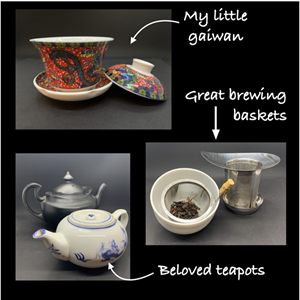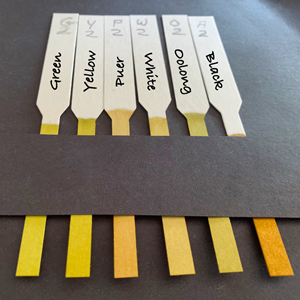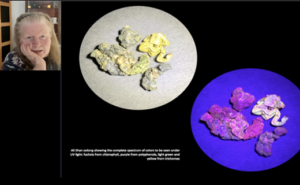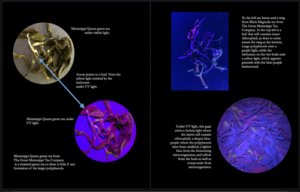This book is a sensual delight: in it, you learn to explore tea using your senses, including sight, smell, taste, and even sound. Dr. Lovelace describes experiments you can try at home with tea using budget-friendly materials. If you are not interested in performing the experiments, she describes (and shows) her results. This is a fascinating journey into the science of tea you can take without leaving home.
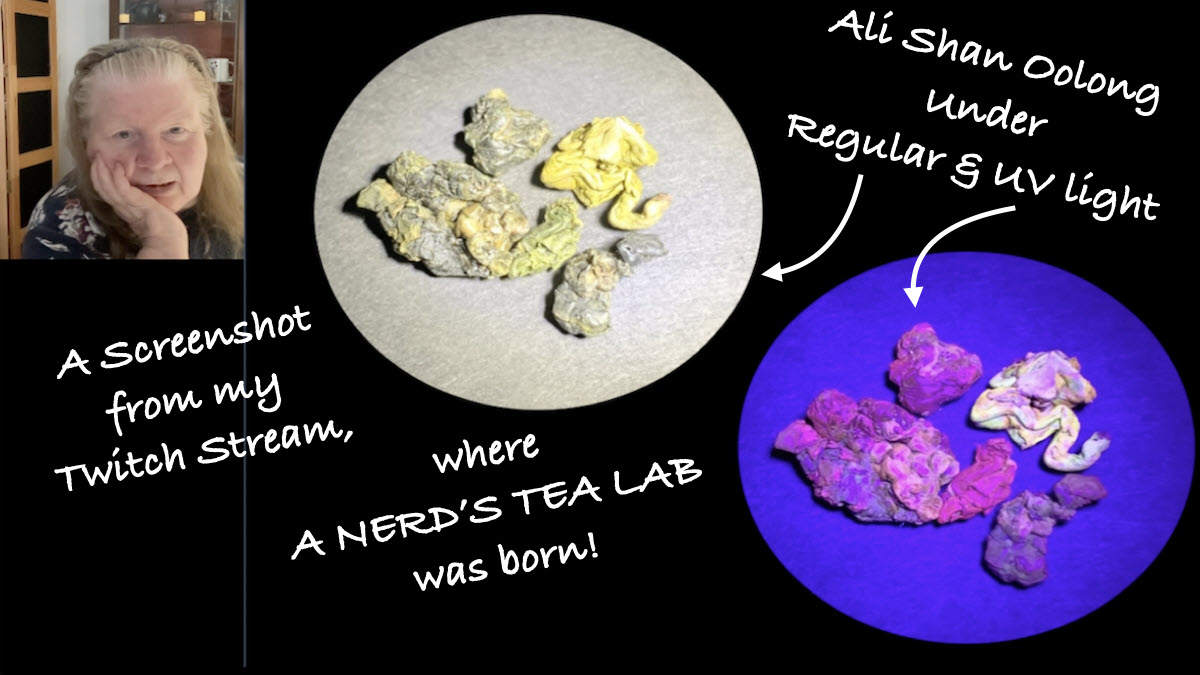
A Nerd’s Tea Lab: How to explore and enjoy your favorite teas at home
By Alexa Campbell
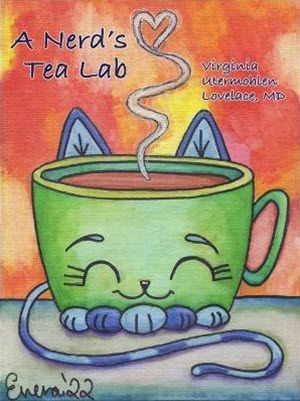
As Dr. Virginia Lovelace explained in her previous book, Tea: A Nerd’s Eye View, a nerd is an individual who enjoys learning and does not adhere to social norms. My first surprise reading her books was discovering that I am a nerd. I enjoyed this book immensely.
But the book could as easily be called a sensualist’s tea lab, for this is a book where you learn to explore your senses with tea, especially sight, sound, smell, and taste.
Virginia Utermohlen Lovelace was born in New York City. She attended French schools until she was 18, studied piano through her childhood (and still plays), took a physics degree, and became a medical doctor, board certified in pediatrics. She joined the faculty at Cornell University and received several teaching awards for her work with students. Now retired, she is applying her teaching and research skills to the world of tea.
Her books pleasantly surprised me, a relative newcomer to the world of tea. A Nerd’s Eye Tea Lab is free of much of the biochemistry of her previous book, and her focus here is to let you explore tea at home. So there are no journeys to tea-producing areas or exotic tea gardens in exotic places, just fun at home with tea.
See Excerpt: Important Note about Teabag Teas
She tells us her introduction to tea was at age 6, on a ship returning home from Europe, just after World War II. Some English ladies taught her how to prepare, serve and enjoy tea. She leaves space for you to write your early memories of tea.
The book begins with a list of supplies you will need to try her experiments with tea. She said the supplies are easy and cheap to acquire, a lesson she learned when she taught her first courses at Cornell with no budget.
The book has some physiology, particularly how we taste, smell, and listen to tea. The last may surprise you but think of the sound of the roil of the kettle and the sound of pouring tea, the clink of cups, the plop of a sugar cube or lemon slice, and the hiss of sipping. But, as with all the science in this book, it is applied science. For example, we learn how taste buds work to affect our perceptions of tea. Knowing how taste buds work helps us understand why what is pleasurable to one person is distasteful to another.
She raises the question of terminology: how do you label the aromas and tastes of tea? We have a limited taste and smell vocabulary in English, so we often say x tastes like y. But, if you’ve never tasted y, you won’t find this description particularly enlightening. So use the words that seem meaningful to you, but keep in mind that these words may not be meaningful to others.
Here you will learn a little about tea processing: through plucking, withering, oxidation, and fermentation. Processing distinguishes different teas: green, white, yellow, oolong, puer-and black teas emerge from different processing stages.
Tea appreciation doesn’t begin with the tea in your cup or mug: it starts with the packaging. Is the tea vacuum-packed, loose, or in a tin, a bag, or a sachet? Is the packaging meant to help preserve the tea, or is it simply to entice you to purchase it?
Bagged teas mainly contain CTC (cut, tear, crush) grades, fannings, and dust, which is not an appealing description. Lower-grade teas often use sustenance leaves plucked below the emerging buds and may lack flavor. In addition, bagging allows for much more economical shipping. So tea in bags is cheaper, and its finer particles make a more potent brew. Dr. Lovelace emphasizes, however, an advantage of tea bags: the taste and quality of bagged tea are consistent. Skilled tea tasters ensure this consistency by blending teas from many sources.
Her first experiment is to compare three forms of English Breakfast Tea, loose or in a bag or sachet. She found that tea from bags is the darkest and least complex flavor. But all forms are enjoyable, depending on your taste. Next, she gives instructions for trying your taste test at home.
Several experiments examine the qualities of loose tea, such as how it looks under ultraviolet light, and develop a comparative chromatograph of various teas. She confessed (and demonstrated) in an interview that the quality of the color in the pictures of the results of these tests differed from those in her photographs shown online. But she describes the results, so the quality of the printed photos doesn’t detract from the experiment’s conclusions. And, of course, she describes how to carry out the experiments so you can see for yourself.
She uses her favorite teapots to illustrate the principles of brewing and serving. She describes various vessels for brewing. A surprise for me was the variety of water temperatures appropriate for brewing tea. I had been raised on “hot the pot, pour boiling water over the tea bag. Steep forever.” This works for black tea but not otherwise.
You can serve your tea in various cups and mugs and even in wine glasses, allowing you a good view of the color of the tea.
Dr. Lovelace provides the chemical explanation for the formation of tea scum, the binding together of large polyphenol molecules. I found this application of chemistry fascinating: I wish more of the science I learned at university had included applications of the facts and formulas. Maybe I’d still be performing experiments, not writing about them. There is much still to be discovered about tea; for example, some of the chemicals that emanate from books match the substances that emanate from a cup of tea, which may explain why tea and reading go so well together.
In conversation, Dr. Lovelace confessed that her favorite tipple is bottled cold tea, and she drinks a fair bit of it during the average day. She also discussed possibilities for tea; for example, there are known tea pairings with food, just as for wine. I sensed a new book brewing.
To see Virginia Lovelace in action, find her on Twitch, where her handle is VUL100. You will find her entertaining, knowledgeable, approachable, and utterly charming. I encourage you to take the time to meet her.
Buy this Book
A Nerd’s Tea Lab by Dr. Virginia Utermohlen Lovelace
VU Books | $20 | 96 pages
November 26, 2022 | Paperback | 8 x 10 in
Amazon (https://www.amazon.com/Nerds-Tea-Virginia-Utermohlen-Lovelace/dp/B0BNDR7S3R)
https://www.twitch.tv/videos/1674038439
Savor the Science | Virginia Utermohlen Lovelace on Twitch TV | VUL100
